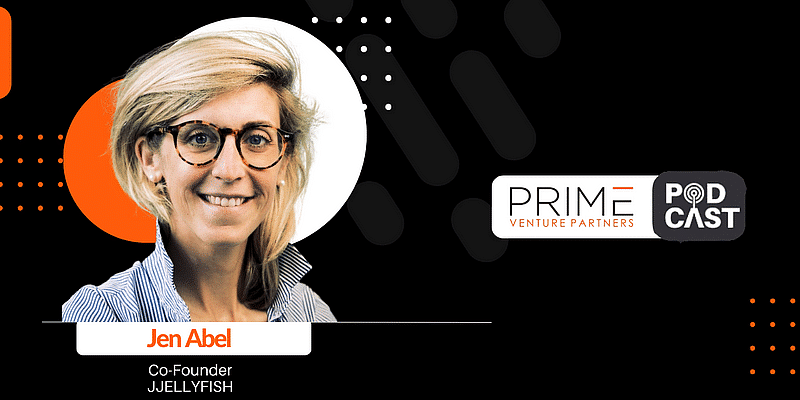With JJellyfish, Jen Abel has been helping global startups and Fortune 500 companies in their 0-1 to 1-10 journey in the US. She holds a decade of early-stage startup experience in the initial go-to-market and execution.
“I don’t think founders can raise their hand and declare product market fit. I think that’s more from the market and an investor, right?,” Jen says.
Early-stage sales: Where things go wrong
When startups never find product market fit, it is usually because they get early-stage sales wrong, she says. After cracking the product, they go straight towards driving revenue, missing a vital piece in this process: the founder’s vision.
A product is the development of a founder’s vision and PMF is really about precisely aligning a founder’s vision to the market reality. And unless startups become specific with who they serve and why, they will never get there.
Plus, delegating sales quickly is a big misstep. Founders don’t want to do sales as they lack the right experience for it.
“They race to delegate it as quickly as possible and that delegation fails. Because there’s only one person that has the vision and the right to iterate on that vision, and that’s the founder. So got it?! Do not delegate sales until you have at a minimum around a million dollars of ARR,” Jen says.
Finding product market fit
After spending all the time, energy, and money on the product, you will need to show proof that the market is willing to pay for it. You start with what are the four or five things your product can initially solve for?
“From those four or five things, one of them needs to be proven true in order to work. If you can’t nail, identify or align to one specific problem, I don’t know where you go from there,” Jen says.
At this stage, the way to go for it is by interviewing the market on what they’re prioritising and the problems that they are putting money towards, and not selling.
“The biggest problem that founders have when they build the product first is they over-indexed there because that’s where all of their time went and where all their excitement and interests live. But in reality, the market does not care about what you’ve built. They care about the problem they’re facing and how you are specifically built to solve it,” she says.
Advice to Indian founders looking to get into the US market
Things Indian founders need to keep in mind before entering the US market.
a) The longer you wait to get into the US market, the harder it is to find the product market fit. The basis, learnings, and insights of the product start moulding to the market needs of the serving market. And the longer you wait, the harder it gets to flex your product to meet the US market needs.
b) The US market being completely different, your local market traction won’t translate to anything there. Not being careful of how you word yourself is a quick way to erode trust.
c) Hitting the first million takes time anywhere, but in the US, it takes longer than you can think. Adjusting to the nuances of the new market and competing against multiple alternatives are just a couple of reasons why.
“The founder’s vision needs to be iterated on super quickly because it will need to be adjusted for the US, and it is the fastest way to build trust here. So, there are two things – founder-led startups have the highest likelihood of increasing the odds of success, and two, get as specific as possible,” Jen says.
So, if you can be super specific, precise, and show the customers just what they want to see, you will win.
You can listen to the full episode here
Time stamps
01:30 – Early-Stage Sales & PMF
11:00 – How to Discover Your Customer’s Problems
16:00 – How to Run a Great Demo
21:00 – How to Think About Price Discovery
28:30 – Role of Marketing in the 0-1 stage
36:00 – 3 Big Things Every Indian SaaS founder Should Know





![Read more about the article [Funding roundup] Classplus, mCaffeine, GOQii net growth capital; Digimaze, FlexC, others raise early rounds](https://blog.digitalsevaa.com/wp-content/uploads/2022/03/Featureimages-newdeck11-1648557514692-300x150.png)




